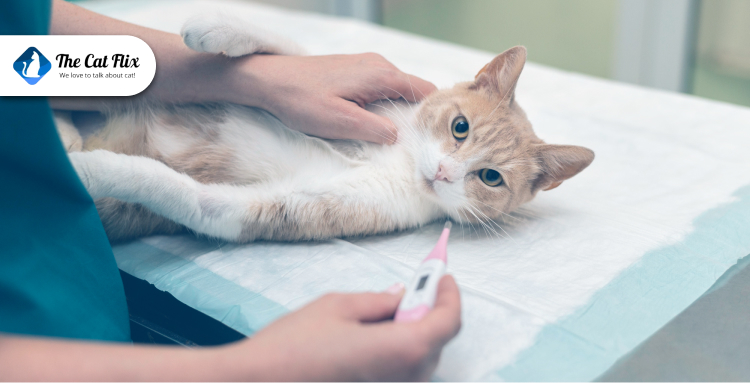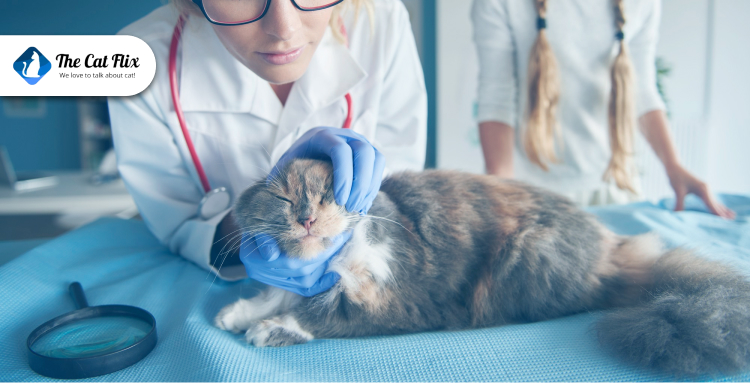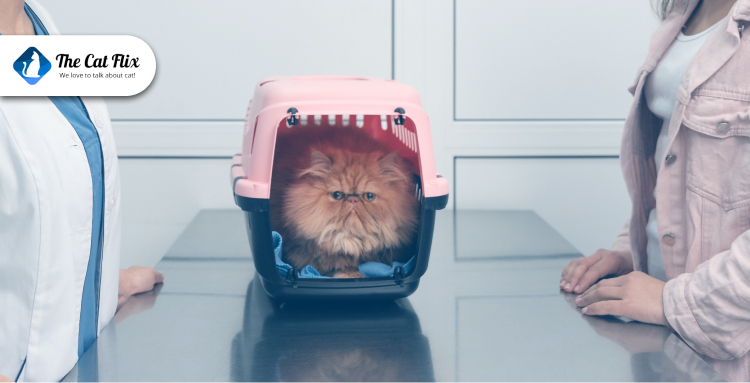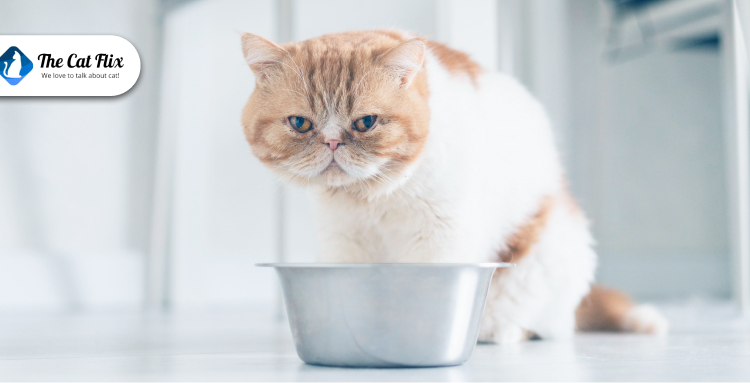We often make a simple assumption – a chubby cat equals one with a hefty appetite. It makes sense, doesn’t it? But what if your cat is sporting a bit of extra padding despite being a rather light eater? It’s as they politely nibble at their meals, never beg for seconds, and yet, their silhouette seems to expand each month. You carefully measure their meals, making sure they don’t get extra treats, but no use. This is confusing, and it happens more often than you might think. This isn’t about blaming owners for doing something wrong or accusing cats of secret midnight feasts.
Instead, it makes us ask a crucial question: if it’s not simply overeating, then why are they gaining weight? This strange situation – an overweight cat with a normal or even small appetite – shows us that there might be other reasons besides just putting too much food in their bowl. It’s time to look closer and find out what else could be making these cats gain weight.
Obesity in Cats: How Much Weight Is Too Much?
Our cats’ ancestors had to hunt for every meal. They didn’t have comfy beds or tasty treats like our pets do today. Because our house cats don’t move around and hunt as much, many of them are overweight. In fact, a lot of pet cats in the US—around 30-40%—carry extra weight.
A cat is considered overweight when they’re 10% heavier than their ideal weight. They’re considered obese when they’re 20% or more over that ideal. It can be hard to notice weight gain since you see your cat every day.
But weight alone doesn’t tell the whole story. You also need to check their body condition. Signs like no visible waist, a saggy belly, and not being able to easily feel their ribs mean your cat is likely overweight. Other signs include less activity, not wanting to play, and trouble grooming, which can lead to coat problems.
Ideal Weight for Cats
Now you can ask – what’s a healthy weight for a cat? Well, a cat’s ideal weight depends on their breed and age. Most average-sized house cats, like Siamese, are around 10 pounds. Bigger cats, like Maine Coons, can weigh up to 25 pounds, while smaller breeds might only weigh 5 pounds.
Regular vet checkups are helpful. Vets can weigh your cat and spot any weight gain early. They can also show you how to check your cat’s body shape to figure out their ideal weight. This is called body condition scoring.
Also, you can measure your cat’s weight and check whether it’s healthy or not. How? Using Feline Body Mass Index (FBMI). It helps compare your cat’s weight to their size. FBMI determines if they’re underweight, a healthy weight, overweight, or obese. You need their weight and leg length to calculate it.
You can use their weight from their last vet visit or weigh them at home. One way to do this at home is to hold your cat while you weigh yourself, then subtract your weight. Another way is to weigh your cat in their carrier, and then subtract the carrier’s weight.
Next, you need to measure their leg length. This is called the Patella-Calcaneus Length (PCL). It’s the length from their knee to their ankle. Make sure your cat is standing up straight when you measure. Then input the values in the BMI calculator and find out if they’re overweight.
Do Medical Conditions Cause Weight Gain in Cats?

While overeating is the main reason cats become overweight, it’s not the only one. If your cat eats well, and gets exercise, but still gains weight, a health problem might be the cause. Treating the underlying issue can often help them reach a healthy weight. Your vet can check if a medical condition is behind your cat’s weight gain. Here are some possibilities:
- Spaying/Neutering: These surgeries don’t directly cause weight gain. However, altered cats need fewer calories. If you see your cat gaining weight after surgery, talk to your vet. They can recommend the right amount of food.
- Pregnancy: For unspayed cats, weight gain could mean kittens are on the way. A growing belly might not just be extra fat but a sign your cat is expecting.
- Fluid Retention: Certain illnesses, like heart disease or feline infectious peritonitis (FIP), can cause fluid buildup in the belly. This creates a pot-bellied look unrelated to fat.
- Acromegaly: A tumor that produces too much growth hormone usually causes this condition. This can affect how a cat uses insulin, often leading to diabetes. If diabetes is hard to control with insulin shots, acromegaly might be the cause.
- Medications: Some medicines, like long-term steroids, can cause weight gain. They might increase appetite or, in rare cases, lead to Cushing’s syndrome. Excess cortisol(a hormone produced by the adrenal glands) causes this condition. As a result, cats start to gain weight, especially around the abdomen, face (“moon face”), and upper back (“buffalo hump”).
- Hypothyroidism: This is when the thyroid doesn’t make enough hormones. It’s rare in cats but can happen after treating an overactive thyroid.
- Genetics/Breed: Some breeds, like Persians and Ragdolls, are more prone to weight gain. Genetics affect how a cat’s body uses and stores food. Even if a cat eats normal portions, they might gain weight due to their genes. Studies show that genetics can play a big role in a cat’s weight.
Are There Other Reasons That Make Your Cat Overweight Without Overeating

Weight gain in cats isn’t always about medical causes. Sometimes, other factors play a role. Let’s look at some common reasons your cat might gain weight even with a controlled diet.
-
Not Enough Exercise:
Just like us, cats need exercise to stay healthy. If your cat doesn’t move much, they can gain weight, even if they eat the right amount. This is especially true for indoor cats who don’t hunt or roam.
Cats are naturally active, but house cats have it easier. They get food in a bowl and have smaller territories. Less activity means fewer calories burned, which can lead to weight gain. Indoor and older cats are more likely to be less active.
-
Getting Older:
As cats age, their metabolism slows down. They don’t need as many calories. If you feed an older cat the same amount as a younger cat, they might gain weight. Older cats are less active, need fewer calories, and sleep more. They started to experience health problems like arthritis. This condition makes joints painful, which leads to less activity and weight gain. It’s a major reason for weight gain.
-
Overfeeding Without Realizing
Even if you think you’re measuring food correctly, inaccuracies can happen. Using cups instead of a kitchen scale might lead to overfeeding. A small adjustment in portion size, weighed accurately, can make a big difference.
Another thing is “Free Feeding”. Leaving food out all day for your cat to snack on – can lead to overeating. Even if it seems like your cat isn’t eating much, the constant grazing can add up. Some cats have trouble self-regulating and will eat whenever food is available. Switching to measured portions can help manage their calorie intake.
Also read: Best Microchip Cat Feeder
-
Fast Eating and Bloating
Some cats eat too quickly, swallowing air along with their food. This can cause bloating, which makes them look heavier than they really are. Slow feeder bowls can help your cat eat at a healthier pace.
Why Does Cat Overweight Matters: Health Risks and Consequences

Being overweight is serious for cats. It can shorten their lives. Overweight middle-aged cats are much more likely to die earlier than cats at a healthy weight. Extra weight puts cats at risk for many health problems:
- Diabetes: This happens when a cat’s body doesn’t use insulin properly. Overweight cats are less sensitive to insulin. This causes high blood sugar. They might also lose weight, develop cataracts, and have high blood pressure. If you’re worried about diabetes, your vet can do simple blood and urine tests. Early treatment can help cats go into remission and not need long-term insulin.
- Joint Problems: Extra weight puts stress on joints. This damages the cushioning inside and leads to arthritis. The joints become inflamed, and movement becomes painful. You might notice your cat being less active. Your vet can diagnose arthritis and help you manage it.
- Liver Disease (Hepatic Lipidosis): This is a serious liver problem in overweight cats. If an overweight cat stops eating, their liver tries to use stored fat for energy. This damages the liver and can cause liver failure. It’s very important to watch overweight cats for loss of appetite. This condition can be deadly.
- Bladder Problems: Overweight cats who don’t move much are more likely to get bladder infections and bladder stones because they don’t urinate as often.
- Weakened Immune System: Studies show that overweight cats can have a weaker immune system, making them more susceptible to illness.
- Heart and Lung Problems: Extra weight makes the heart and lungs work harder. This can worsen existing heart or lung problems like asthma. Cats hide illness well, so regular vet checkups are important.
- Skin Problems: Overweight cats can get skin irritation and infections in skin folds and around their inner thighs. These areas need regular checks.
- Surgery Risks: Being overweight can make anesthesia and surgery riskier. The extra weight puts more strain on the heart and lungs and can make surgery take longer.
Helping your cat maintain a healthy weight can prevent many of these issues. If you’re looking for tips on weight loss for cats, check out our related article: Cat Weight Loss Tips for simple and effective advice.
Frequently Asked Questions
How often should I feed my overweight cat?
It’s best to feed your overweight cat smaller meals 2-3 times a day. This helps regulate their metabolism and keeps them feeling fuller for longer.
Should I feed my overweight cat once a day?
Once-a-day feedings of dry food can work if done carefully. Offer a limited amount, around 1/4 cup or less, in the evening about an hour before bedtime.
How long can an overweight cat go without eating?
Less than a week. After 3 days without consuming food, your cat’s body fat starts to break down for energy. But this can cause a life-threatening condition for an overweight cat, called fatty liver (hepatic lipidosis).
Is wet food better for overweight cats?
Yes, wet food is usually better for weight loss. It has fewer calories per serving because of its high moisture content. Your cat can eat a similar amount of food but consume fewer calories compared to dry food.
Do cats gain more weight with dry food?
Dry food is calorie-dense and often left out all day. It allows cats to snack excessively, which can lead to weight gain. Measuring portions and avoiding free-feeding can help.
Conclusion
Managing a cat’s weight is crucial for their overall health and well-being. While overeating is often the primary culprit, it’s important to remember that other factors, such as underlying medical conditions, age, lack of exercise, and even genetics, can play a significant role. Recognizing the signs of overweight and understanding the potential health risks are the first steps toward helping your feline friend live a longer, healthier life.
If you found this guide helpful, share it with other cat lovers who might benefit from these insights. Have any questions or a story about your cat’s weight journey? Drop a comment below.

